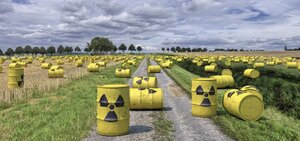
by William R. Roy
April 15, 2020
People tend to be afraid of anything radioactive, and the management of radioactive wastes quickly evokes NIMBY (not in my backyard). Radioactive wastes, however, are a necessary byproduct of using nuclear energy as green energy for electric utilities. In terms of volume, most radioactive wastes are called low-level radioactive wastes (LLRW). LLRW is a broad category of solids, liquids, and gases that can contain several different radionuclides that are byproducts from several sources. Nuclear power plants generate the majority of LLRW in the U.S. (Contreras, 1992). The prevalent method for disposing of LLRW has been shallow-land burial (Roy, 2013). Our previous attempts to manage low-level wastes were indeed problematic. Disposing of LLRW generated in Illinois contributed to the ill-fated Maxey Flats Disposal Site in Kentucky, the now-closed Sheffield Low-Level Radioactive Waste Disposal Facility, and the Martinsville LowLevel Waste Disposal Facility which was proposed but never established. For years, Illinois had only three options for disposing of LLRW in one of three other states, and each facility could not accept certain types (Class B and C) LLRW generated in Illinois. For example, the Clinton Power Station would simply store Class B LLRW on-site until an alternative arrived. And they waited and waited.
Read the full commentary here.